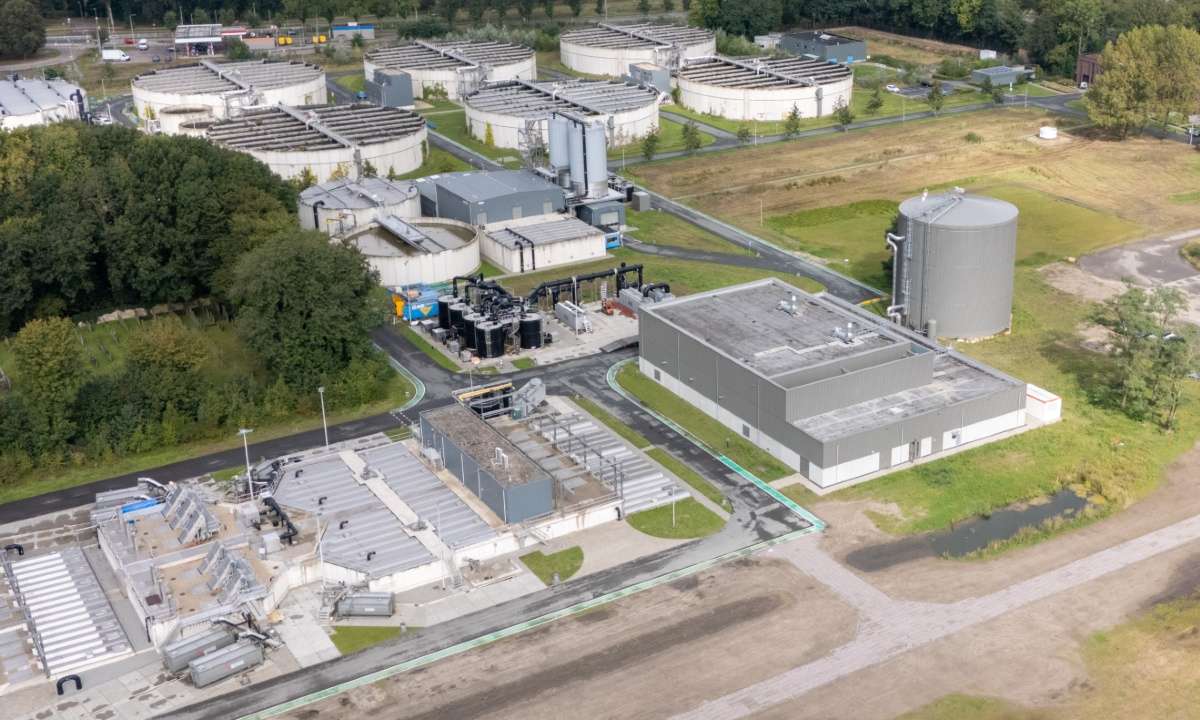Analysis: The Economic Viability Of Offshore Wind Energy

Table of Contents
Capital Costs and Financing
Developing offshore wind farms requires a substantial upfront investment. The capital expenditure encompasses various stages, from the initial site assessment and environmental impact studies to the procurement of wind turbines, foundations, subsea cables, and the construction of onshore substations and grid connections. These costs can be astronomical, reaching billions of dollars for large-scale projects.
Different financing models are employed to manage these significant costs. Public-private partnerships (PPPs) are common, combining the financial resources and expertise of both the public and private sectors. Government subsidies, tax credits, and green bonds also play a critical role in mitigating the financial risks associated with offshore wind development. However, interest rates and inflation significantly influence project feasibility, making it crucial to secure favorable financing terms.
- High initial capital expenditure: The sheer scale of offshore wind projects necessitates massive initial investments.
- Role of government incentives and tax credits: Government support is vital in making offshore wind projects economically attractive.
- Access to project finance and risk mitigation strategies: Securing financing requires a robust risk assessment and mitigation plan.
- Comparison of financing options for offshore vs. onshore wind: Offshore wind typically requires more substantial investment due to the complexities of offshore operations.
Operational Costs and Maintenance
Beyond the initial capital investment, offshore wind farms incur ongoing operational costs. These include routine maintenance, repairs, inspections, and insurance. Accessing and maintaining offshore turbines presents unique challenges, requiring specialized vessels, equipment, and highly skilled personnel. Harsh weather conditions further complicate maintenance schedules, potentially leading to increased costs and downtime.
However, technological advancements are steadily reducing operational costs. AI-powered predictive maintenance, for example, allows for more efficient scheduling of repairs and minimizes unexpected downtime. Improved turbine designs and materials also contribute to increased longevity and reduced maintenance needs.
- Regular inspections and repairs: Thorough and regular inspections are essential to ensure the safe and efficient operation of offshore wind turbines.
- Specialized equipment and skilled labor: Offshore maintenance requires specialized equipment and highly trained personnel.
- Impact of weather conditions on maintenance schedules: Adverse weather conditions can significantly impact maintenance operations, increasing costs and delays.
- Technological innovations for cost reduction (e.g., AI-powered predictive maintenance): Technological advancements are crucial in optimizing operational efficiency and reducing costs.
Energy Production and Revenue Streams
The economic viability of offshore wind is heavily dependent on its energy production capacity and the resulting revenue streams. Factors influencing energy production include the wind resource at the chosen location, the efficiency of the turbines, and the capacity factor (the percentage of time the turbines are operating at their maximum capacity). A higher capacity factor translates directly into greater energy output and revenue.
Revenue is generated through various models, including Power Purchase Agreements (PPAs) – long-term contracts with electricity buyers – and feed-in tariffs, which guarantee a fixed price for the electricity generated. Electricity prices and overall energy market dynamics play a crucial role in the profitability of these projects. The implementation of carbon pricing mechanisms can also significantly boost the economic attractiveness of offshore wind, as it reflects the environmental benefits of clean energy production.
- Estimating energy yield and capacity factor: Accurate assessment of wind resources and turbine performance is crucial for realistic revenue projections.
- Long-term power purchase agreements (PPAs): PPAs provide price certainty and reduce revenue risks for offshore wind developers.
- Revenue diversification strategies: Exploring multiple revenue streams, like ancillary services, can enhance project profitability.
- Impact of carbon pricing mechanisms: Carbon pricing can significantly improve the competitiveness of offshore wind compared to fossil fuel-based energy sources.
Environmental and Social Impacts
Offshore wind energy offers significant environmental benefits, including reduced carbon emissions and improved air quality. However, potential environmental impacts, such as effects on marine ecosystems and noise pollution, need careful consideration and mitigation. Robust environmental impact assessments and mitigation strategies are crucial for ensuring the responsible development of offshore wind projects.
Moreover, offshore wind projects create numerous social benefits, including job creation in manufacturing, construction, operation, and maintenance. Effective community engagement and stakeholder consultation are essential for securing a "social license to operate" and ensuring that the positive social impacts are maximized while minimizing negative consequences.
- Marine habitat protection strategies: Implementing measures to minimize impacts on marine life is critical for sustainable offshore wind development.
- Noise mitigation techniques: Employing effective noise mitigation strategies is crucial for minimizing impacts on marine mammals and other wildlife.
- Stakeholder engagement and social license to operate: Building strong relationships with local communities and stakeholders is key to successful project implementation.
- Contribution to green jobs and economic development: Offshore wind projects can stimulate significant economic growth and create numerous well-paying jobs.
Grid Integration and Transmission Costs
Connecting offshore wind farms to the electricity grid presents significant engineering and economic challenges. The substantial distances involved and the harsh marine environment require specialized subsea cables and onshore substations. These grid integration costs can be substantial, representing a considerable portion of the overall project budget.
The choice of grid integration technologies also affects costs. High-voltage direct current (HVDC) transmission is often preferred for long-distance transmission, while alternating current (AC) solutions are sometimes more cost-effective for shorter distances. Grid modernization initiatives, including the development of smart grids and improved grid infrastructure, play a crucial role in facilitating the efficient integration of large-scale offshore wind power.
Conclusion
The economic viability of offshore wind energy hinges on a complex interplay of factors, including substantial capital costs, ongoing operational expenses, energy production capabilities, and environmental considerations. While the initial investment is significant, the potential for long-term revenue generation, coupled with substantial environmental benefits and job creation, makes offshore wind an increasingly attractive option for meeting the global demand for clean energy. Understanding the detailed economic aspects of offshore wind projects, including financing strategies, revenue models, and the costs associated with grid integration, is paramount. Investing in a deeper understanding of the economic viability of offshore wind energy is crucial for accelerating the global transition to clean energy and ensuring a sustainable energy future.

Featured Posts
-
 Netherlands Largest Heat Pump Utrecht Wastewater Plant Innovation
May 03, 2025
Netherlands Largest Heat Pump Utrecht Wastewater Plant Innovation
May 03, 2025 -
 Reform Uks Growing Political Power A Look At Nigel Farages Role
May 03, 2025
Reform Uks Growing Political Power A Look At Nigel Farages Role
May 03, 2025 -
 1 Mayis Arbedeleri Gecmisten Guenuemueze Emek Hareketinin Izleri
May 03, 2025
1 Mayis Arbedeleri Gecmisten Guenuemueze Emek Hareketinin Izleri
May 03, 2025 -
 Avrupa Is Birligimizi Gelistirme Yolunda Yeni Politikalar Ve Stratejiler
May 03, 2025
Avrupa Is Birligimizi Gelistirme Yolunda Yeni Politikalar Ve Stratejiler
May 03, 2025 -
 Financial Plannings Future Cfp Board Ceo To Retire In 2026
May 03, 2025
Financial Plannings Future Cfp Board Ceo To Retire In 2026
May 03, 2025
